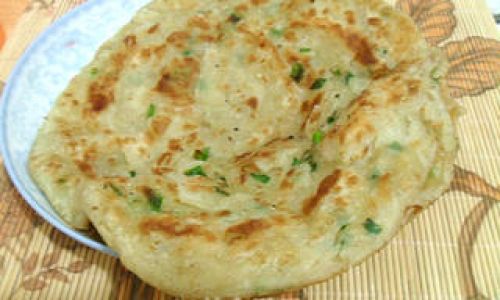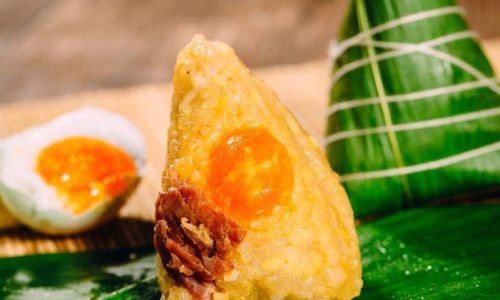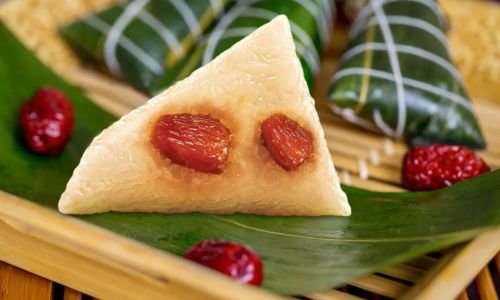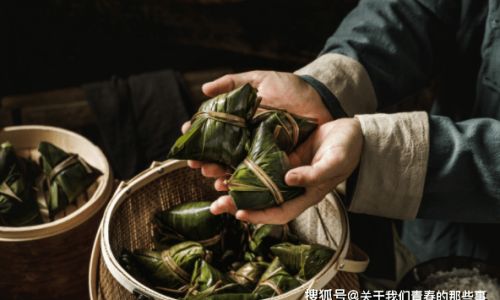Table of content
Scallion oil pancakes, known as cong you bing in Chinese cuisine, are a beloved street food and home-cooked delight celebrated for their crispy, golden layers and aromatic flavor. These pancakes strike the perfect balance between savory and slightly spicy notes, thanks to the infusion of fresh scallions and fragrant oil. Whether served as a breakfast treat, a snack, or a side dish, scallion oil pancakes are versatile and deeply satisfying. This comprehensive guide will walk you through every step of creating these iconic pancakes, from preparing the dough to achieving that coveted flaky texture. Along the way, you’ll discover expert tips, troubleshooting advice, and creative variations to elevate your culinary skills.
The Art of Scallion Oil Pancakes: A Brief Overview
Scallion oil pancakes have a rich history in Chinese cuisine, dating back centuries. Originating in northern China, they were initially a peasant food due to their simplicity and use of readily available ingredients. Over time, they gained popularity across regions and cultures, becoming a staple in dim sum restaurants, night markets, and home kitchens worldwide. The beauty of this dish lies in its minimalist ingredients—flour, water, oil, scallions, and salt—transformed through technique into a layers of crispy, chewy perfection.

Ingredients You’ll Need
Before diving into the recipe, gather the following ingredients. Precision in measurements ensures consistency, especially for those new to dough-making.
For the Dough:
- 2 cups (250g) all-purpose flour (plus extra for dusting)
- 1 cup (240ml) warm water (around 100°F/38°C)
- ½ teaspoon salt
For the Scallion Oil Mixture:
- ¼ cup (60ml) vegetable oil (or neutral oil like canola)
- 1 bunch fresh scallions (green onions), finely chopped (about 1 cup)
- 1 teaspoon salt
- ½ teaspoon white pepper (optional, for heat)
Additional Tools:
- Mixing bowls
- Rolling pin
- Pastry brush
- Skillet or non-stick pan
- Spatula
- Plate lined with paper towels (for draining excess oil)
Step 1: Preparing the Dough
The foundation of a great scallion oil pancake is a soft, pliable dough. Achieving the right texture requires attention to hydration and resting time.
-
Combine Dry Ingredients:
In a large mixing bowl, whisk together the flour and salt. This ensures even seasoning throughout the dough. -
Add Warm Water Gradually:
Slowly pour the warm water into the flour mixture while stirring with a wooden spoon or chopsticks. The warm water activates the gluten, making the dough easier to knead. Continue mixing until a shaggy dough forms. -
Knead the Dough:
Transfer the dough to a lightly floured surface. Knead for 8–10 minutes until smooth and elastic. The dough should feel tacky but not sticky. If it sticks to your hands, add 1–2 tablespoons of flour. Conversely, if it feels dry, sprinkle a few drops of water. -
Rest the Dough:
Place the dough back in the bowl, cover with a damp kitchen towel or plastic wrap, and let it rest for 30–45 minutes. Resting allows the gluten to relax, making the dough easier to roll out.
Step 2: Crafting the Scallion Oil Mixture
The flavor-packed oil mixture is what gives the pancakes their signature taste. Fresh scallions are non-negotiable here—dried or frozen alternatives won’t impart the same brightness.
-
Prep the Scallions:
Rinse the scallions thoroughly and pat them dry. Trim the roots and any wilted ends. Finely chop both the green and white parts, as the white portions add mild onion flavor. -
Combine Ingredients:
In a small bowl, mix the vegetable oil, chopped scallions, salt, and white pepper (if using). Stir until the scallions are evenly coated. The oil prevents the scallions from burning during cooking.
Step 3: Assembling the Pancakes
This step is where the magic happens. The key to flaky layers lies in the rolling and folding technique, which creates distinct strata that puff up when cooked.
-
Divide the Dough:
Once rested, divide the dough into 4 equal portions. Roll each portion into a smooth ball. Cover them with a damp towel to prevent drying. -
Roll Out the Dough:
Take one dough ball and flatten it with your palm. Using a rolling pin, roll it into a thin circle (about 8–9 inches in diameter). Don’t worry if it’s not perfectly round. -
Apply the Oil Mixture:
Brush a generous layer of the scallion oil mixture over the dough, leaving a ½-inch border around the edges. Ensure even coverage for maximum flavor. -
Create Layers:
This is the most critical step. Roll the dough into a tight cylinder, then coil it into a spiral (like a cinnamon roll). Tuck the loose end underneath to secure. Repeat with the remaining dough balls. -
Final Roll-Out:
Take one spiral and flatten it gently with your palm. Use the rolling pin to roll it into a 6–7 inch circle. The layers should be visible but not tearing. If scallions pop out, press them back in gently.
Step 4: Cooking the Pancakes
The cooking method affects both texture and flavor. Pan-frying yields the classic crispy exterior, while baking offers a slightly healthier alternative.
Pan-Frying Method (Recommended):
-
Heat the Skillet:
Place a non-stick or cast-iron skillet over medium heat. Add 1–2 tablespoons of vegetable oil. -
Cook the Pancake:
Carefully transfer one rolled pancake to the skillet. Cook for 2–3 minutes per side until golden brown and crispy. Press gently with a spatula to ensure even cooking. -
Drain Excess Oil:
Transfer the cooked pancake to a plate lined with paper towels. Repeat with the remaining pancakes, adding more oil as needed.
Baking Method:
-
Preheat the Oven:
Preheat the oven to 400°F (200°C). Line a baking sheet with parchment paper. -
Bake Until Crispy:
Place the rolled pancakes on the sheet and brush the tops with oil. Bake for 15–20 minutes, flipping halfway, until golden and crisp.
Step 5: Serving and Storage
Scallion oil pancakes are best enjoyed immediately while hot and crispy. Serve them with:

- Dipping Sauces: Soy sauce mixed with vinegar, chili oil, or hoisin sauce.
- Sides: Pickled vegetables, cucumber salad, or a fried egg.
- Soups: Pair with miso soup or hot-and-sour soup for a complete meal.
Storage Tips:
Leftover pancakes can be refrigerated in an airtight container for up to 3 days. Reheat in a skillet over low heat to restore crispness.
Expert Tips for Perfect Scallion Oil Pancakes
-
Dough Consistency:
If the dough is too sticky after resting, knead in 1–2 teaspoons of flour. If too stiff, wet your hands slightly and knead until pliable. -
Layering Technique:
Don’t roll the dough too thin before applying the oil mixture, as this can cause tears. Aim for a ¼-inch thickness during the initial roll-out. -
Oil Temperature:
When pan-frying, ensure the oil is hot but not smoking. Test by dropping a small piece of dough into the pan—it should sizzle gently. -
Avoiding Soggy Layers:
If the pancakes turn out greasy, reduce the oil in the filling next time. Ensure the skillet is fully heated before adding the dough. -
Scaling the Recipe:
This recipe doubles easily. Freeze uncooked spiral-shaped dough for up to 1 month. Thaw in the refrigerator before rolling and cooking.
Creative Variations
-
Spicy Scallion Pancakes:
Add 1–2 teaspoons of chili flakes or Sichuan peppercorn oil to the scallion mixture. -
Cheese-Stuffed Pancakes:
Sprinkle shredded cheddar or mozzarella over the oil mixture before rolling. -
Gluten-Free Version:
Substitute all-purpose flour with a 1:1 gluten-free baking blend. Add 1 teaspoon of xanthan gum for elasticity. -
Vegan Option:
Use coconut oil or sesame oil in place of vegetable oil. Ensure your dipping sauces are vegan-friendly.
Troubleshooting Common Issues
-
Pancakes Are Tough:
Over-kneading the dough develops too much gluten. Knead just until smooth. -
Layers Don’t Separate:
The oil mixture wasn’t applied evenly, or the dough was rolled too thin initially. -
Burnt Scallions:
Reduce heat during cooking or use a thicker pan for better heat distribution. -
Dough Springs Back While Rolling:
Let the dough rest for an additional 10–15 minutes to relax the gluten.
The Science Behind Scallion Oil Pancakes
Understanding the chemistry of dough and oil interaction can refine your technique:
-
Gluten Development: Kneading aligns gluten proteins, creating elasticity. Resting allows gluten strands to relax, making the dough easier to shape.
-
Steam and Crispness: When heated, moisture in the dough evaporates, creating steam that puffs the layers. Oil conducts heat evenly, ensuring crispiness.
-
Scallion Flavor: Fresh scallions release volatile compounds when heated, contributing to the pancakes’ aromatic profile.
Cultural Significance of Scallion Oil Pancakes
In Chinese culture, scallion oil pancakes symbolize simplicity and resourcefulness. They’re often enjoyed during festivals or family gatherings, paired with tea as a symbol of hospitality. Street vendors in Beijing and Shanghai have perfected the art of flipping these pancakes in sizzling woks, creating a sensory experience that delights locals and tourists alike.
Conclusion
Mastering scallion oil pancakes is a rewarding journey that blends technique with creativity. With practice, you’ll learn to balance the delicate dance of dough, oil, and heat. Whether you stick to the classic recipe or experiment with bold variations, these pancakes are sure to become a cherished addition to your culinary repertoire. So roll up your sleeves, embrace the process, and savor the crispy, aromatic results of your labor. Happy cooking!





0 comments